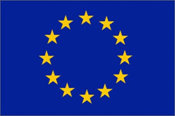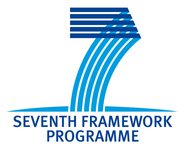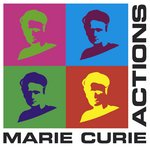ITN Stardust
Workpackage Close-Range Navigation and Manipulation of Space Debris and Asteroids
The ITN Stardust Project is an EU-wide programme, funded by the FP7 Marie Curie Initial Training Networks (ITN) scheme, which will provide Europe with a first generation of decision makers, engineers and scientists that have the knowledge and capabilities to address the asteroid and space debris issue now and in the future. The overriding goal of this network is to train researchers to develop and master techniques for asteroid and space debris monitoring, removal/deflection and exploitation such that they can be applied in a real scenario. The researcher at the DFKI will work in the fields of active removal/deflection of uncooperative targets specifically on close-range navigation and manipulation of space debris and asteroids.
| Duration: | 01.02.2013 till 31.01.2017 |
| Donee: | German Research Center for Artificial Intelligence GmbH |
| Sponsor: |
European Union
Seventh Framework Programme of the European Union Marie Curie Training Network |
| Grant number: | EU financial support, Marie Curie Training Network, Grant Agreement Number 317185 |
| Partner: | University of Strathclyde, Universitá di Roma Tor Vergata, Universitá di Pisa, University of Southampton, Universidad Politécnica de Madrid, Astronomical Observatory, Consiglio Nazionale delle Ricerche, Dinamica, DEIMOS Space S.L.U., European Space Agency, Centre National de la Recherche Scientifique, Astrium Ltd, Telespazio |
| Application Field: | Space Robotics |
| Related Projects: |
Inveritas
Innovatice technologies for relative navigation and capture
(05.2009-
03.2012)
RTES-TA
Robotic technologies for the removal of space debris
(10.2012-
03.2013)
|
Project details
Background and Motivation:
Asteroids and space debris represent a significant hazard for space and terrestrial assets; at the same time asteroids represent also an opportunity. In recent years it has become clear that the increasing amount of space debris could lead to catastrophic consequences in the near term.
The Kessler syndrome (where the density of objects in orbit is high enough that collisions could set off a cascade) is more realistic than when it was first proposed in 1978. Though statistically less likely to occur, an asteroid impact would have devastating consequences for our planet. Although an impact with a large (~10 km) to medium (~300 m) sized, or diameter, asteroid is unlikely, still it is not negligible as the recent case of the asteroid Apophis has demonstrated. Furthermore impacts with smaller size objects, between 10 m to 100 m diameter, are expected to occur more frequently and hence are, proportionally, equally dangerous for humans and assets on Earth and in space.
Asteroids and space debris share a number of commonalities: both are uncontrolled objects whose orbit is deeply affected by a number of perturbations, both have an irregular shape and an uncertain attitude motion, both are made of inhomogeneous materials that can respond unexpectedly to a deflection action, for both, accurate orbit determination is required, both need to be removed before they impact with something valuable for us.
The observation, manipulation and disposal of space debris and asteroids represent one of the most challenging goals for modern space technology. It represents a key scientific and commercial venture for the future in order to protect the space and Earth environment. Such a significant multidisciplinary technical challenge, with real societal benefit for the future, represents a compelling topic for a training network.
Workpackage Description:
Research in the DFKI part of the project is dedicated to the analysis and development of technologies and techniques for active removal of space debris and asteroids.
Please visit the project's main webpage for further information:
http://www.stardust2013.eu/



